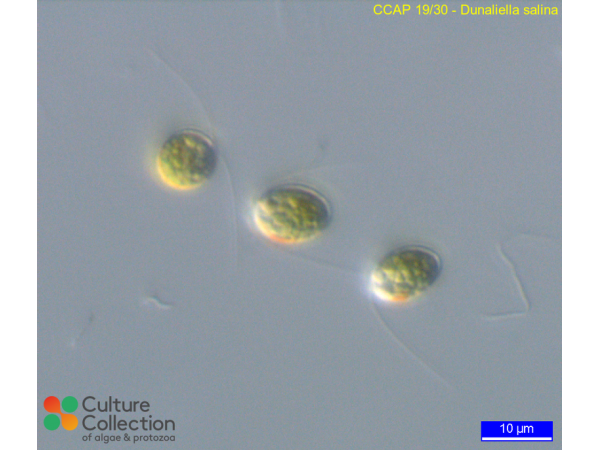References [ 25 ]
Mendoza H, de la Jara A, Freijanes K, Carmona L, Ramos AA, de Sousa Duarte V & Serafim Varela JC (2008) Characterisation of Dunaliella salina strains by flow cytometry: a new approach to select carotenoid hyperproducing strains Electronic Journal of Biotechnology 11(4): -.
Kleinegris DMM, Janssen M, Brandenburg WA & Wijffels RH (2010) The selectivity of milking of Dunaliella salina Marine Biotechnology 12: 14-23.
Gómez PI & González MA (2005) The effect of temperature and irradiance on the growth and carotenogenic capacity of seven strains of Dunaliella salina (Chlorophyta) cultivated under laboratory conditions. Biological Research 38: 151-162.
DOI: none
Alkayal F, Albion RL, Tillett RL, Hathwaik LT, Lemos MS & Cushman JC (2010) Expressed sequence tag (EST) profiling in hyper saline shocked Dunaliella salina reveals high expression of protein synthetic apparatus components. Plant Science 179: 437-449.
Cowan AK & Rose PD (1991) Abscisic acid metabolism in salt-stressed cells of Dunaliella salina: Possible interrelationship with ß-carotene accumulation. Plant Physiology 97: 798-803.
DOI: none
Orset SC & Young AJ (2000) Exposure to low irradiances favors the synthesis of 9-cis ß,ß-carotene in Dunaliella salina (Teod.) Plant Physiology 122: 609-617.
DOI: none
Zimmerman WB, Zandi M, Bandulasena HCH, Tesar V, Gilmour DJ & Ying K (2011) Design of an airlift loop bioreactor and pilot scales with fluidic oscillator induced microbubbles for growth of a microalgae Dunaliella salina. Applied Energy 88: 3357-3369.
Marin B (2011) Nested in the Chlorellales or independent class? Phylogeny and classification of the Pedinophyceae (Viridiplantae) revealed by molecular phylogenetic analyses of complete nuclear and plastid-encoded rRNA operons. Protist 163: 778-805.
Borowitzka MA & Siva CJ (2007) The taxonomy of the genus Dunaliella (Chlorophyta, Dunaliellales) with emphasis on the marine and halophilic species. Journal of Applied Phycology 19: 567-590.
Assuncao P, Jaen-Molina R, Caujape-Castells J, de la Jara A, Carmona L, Freijanes K & Mendoza H (2011) Phylogenetic position of Dunaliella acidophila (Chlorophyceae) based on ITS and rbcL sequences. Journal of Applied Phycology 24: 635-639.
Gonzalez MA, Coleman AW, Gomez PI & Montoya R (2001) Phylogenetic relationship among various strains of Dunaliella (Chlorophyceae) based on nuclear ITS rDNA sequences. Journal of Phycology 37: 604-611.
DOI: none
Mortain-Bertrand A, Etchart F, de Boucaud M-T (1996) A method for the cryoconservation of Dunaliella salina (Chlorophyceae): Effect of glycerol and cold adaptation. Journal of Phycology 32: 346-352.
DOI: none
Orset S & Young AJ (1999) Low-temperature-induced synthesis of a-carotene in the microalga Dunaliella salina (Chlorophyta). Journal of Phycology 35: 520-527.
DOI: none
Gomez PI & Gonzalez MA (2004) Genetic variation among seven strains of Dunaliella salina (Chlorophyta) with industrial potential, based on RAPD banding patterns and on nuclear ITS rDNA sequences Aquaculture 233: 149-162.
Wang WC, Allen E, Campos AA, Killens Cade R, Dean L, Dvora M, Immer JG, Mixson S, Srirangan S, Sauer ML, Schreck S, Sun K, Thapaliya N, Wilson C, Burkholder J, Grunden AM, Lamb HH, Sederoff H, Stikeleather LF & Roberts WL (2013) ASI: Dunaliella marine microalgae to drop-in replacement liquid transportation fuel. Environmental Progress & Sustainable Energy 32: 916-925.
Assuncao P, Jaen-Molina R, Caujape-Castells J, Wolf M, Buchheim MA, de la Jara A, Freijanes K, Carmona L & Mendoza H (2013) Phylogenetic analysis of ITS2 sequences suggests the taxonomic re-structuring of Dunaliella viridis (Chlorophyceae, Dunaliellales). Phycological Research 61: 81-88.
Assuncao P, Jaen-Molina R, Caujape-Castells J, de la Jara A, Carmona L, Freijanes K & Mendoza H (2012) Molecular taxonomy of Dunaliella (Chlorophyceae), with a special focus on D. salina: ITS2 sequences revisited with an extensive geographical sampling. Aquatic Biosystems 8: 2.
DOI: none
Emami K, Hack E, Nelson A, Brain CM, Lyne FM, Mesbahi E, Day JG & Caldwell GS (2015) Proteomic-based biotyping reveals hidden diversity within a microalgae culture collection: An example using Dunaliella. Scientific Reports 5: 10036.
Slocombe SP, Zhang QY, Ross M, Anderson A, Thomas NJ, Lapresa A, Rad Menéndez C, Campbell CN, Black KD, Stanley MS & Day JG (2015) Unlocking nature's treasure-chest: Screening for oleaginous algae. Scientific Reports 5: 09844.
Chen Y, Tang X, Kapoore RV, Xu C & Vaidyanathan S (2015) Influence of nutrient status on the accumulation of biomass and lipid in Nannochloropsis salina and Dunaliella salina. Energy Conversion and Management 106: 61-72.
Xu Y, Ibrahim IM & Harvey PJ (2016) The influence of photoperiod and light intensity on the growth and photosynthesis of Dunaliella salina (chlorophyta) CCAP 19/30 Plant Physiology and Biochemistry 106: 305-315.
Singh P, Khadim R, Singh AK, Singh U, Maurya P, Tiwari A & Asthana R (2018) Biochemical and physiological characterization of a halotolerant Dunaliella salina isolated from hypersaline Sambhar Lake, India Journal of Phycology -: -.
Sui Y, Muys M, Vermeir P, D'Adamo S & Vlaeminck SE (2019) Light regime and growth phase affect the microalgal production of protein quantity and quality with Dunaliella salina Bioresource Technology 275: 145-152.
In-na P, Umar AA, Wallace AD, Flickinger MC, Caldwell GS & Lee JGM (2020) Loofah-based microalgae and cyanobacteria biocomposites for intensifying carbon dioxide capture Journal of CO2 Utilization 42: 101348.
Liu C, Huang D, Zhuo X, Feng J, Wen X, Liao Z, Wu R, Hu Z, Lou S & Li H (2023) Elevated accumulation of lutein and zeaxanthin in a novel high-biomass strain Dunaliella sp. ZP-1 through EMS mutagenesis. Biotechnology for Biofuels and Bioproducts -: -.



